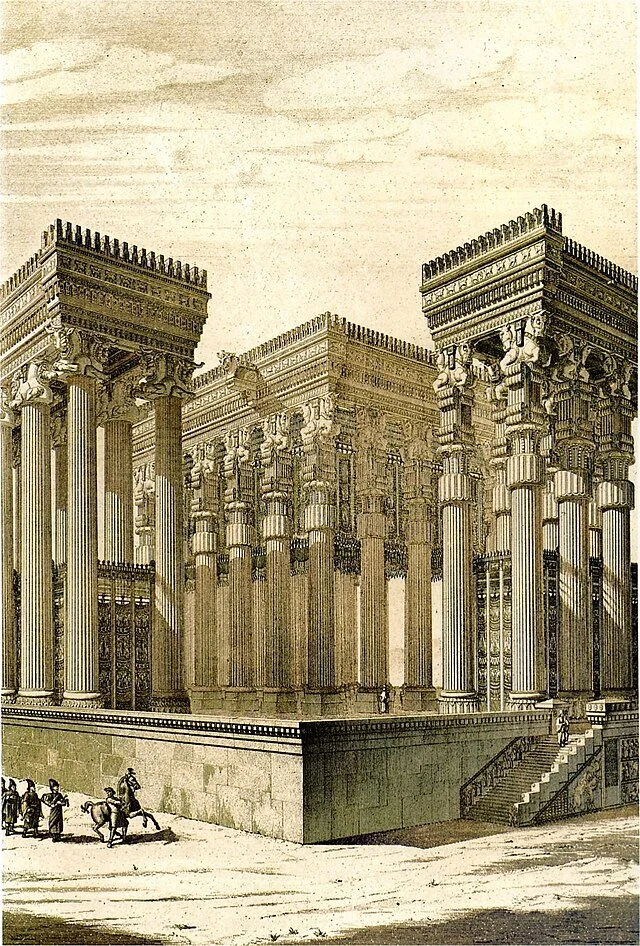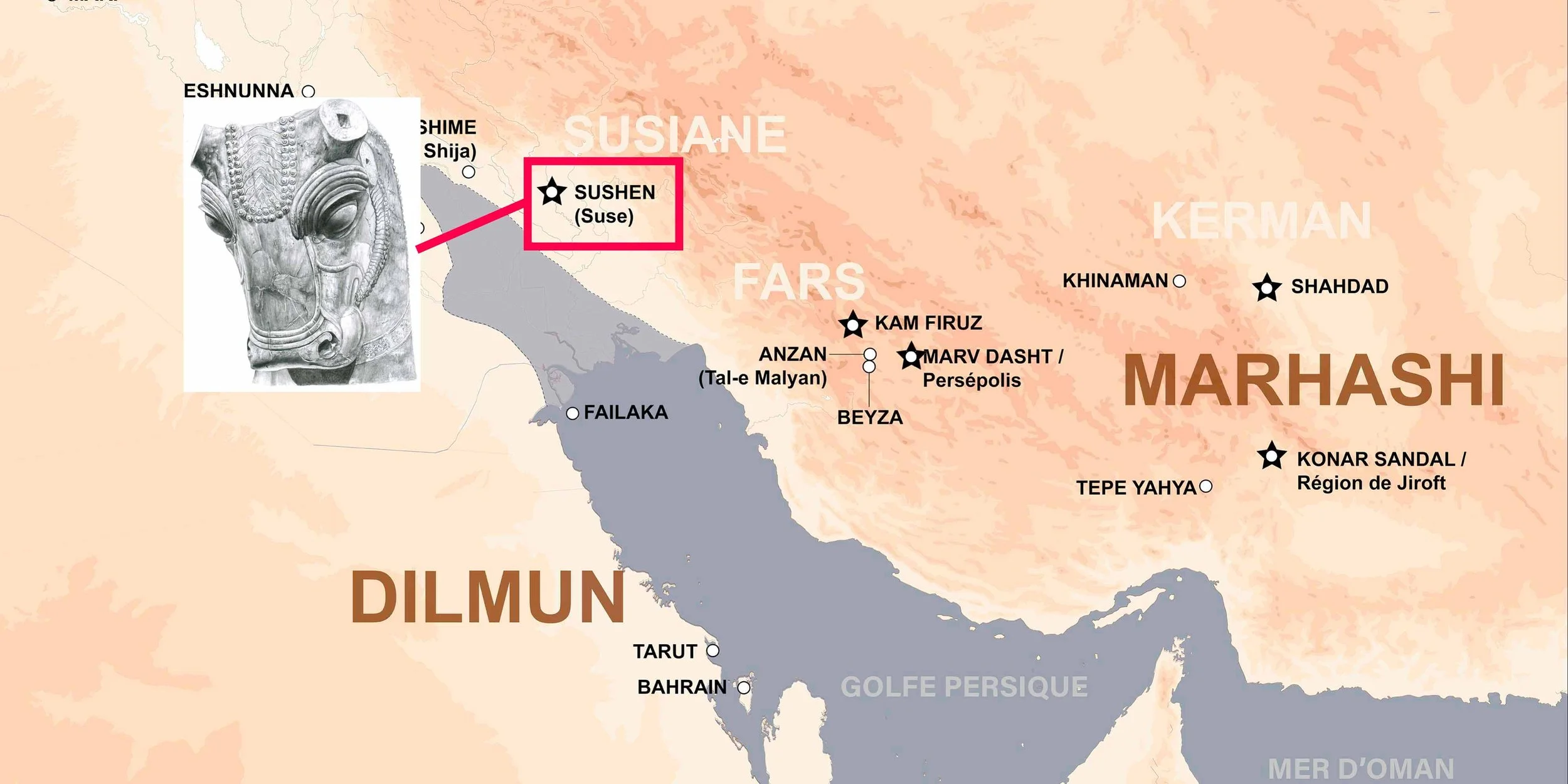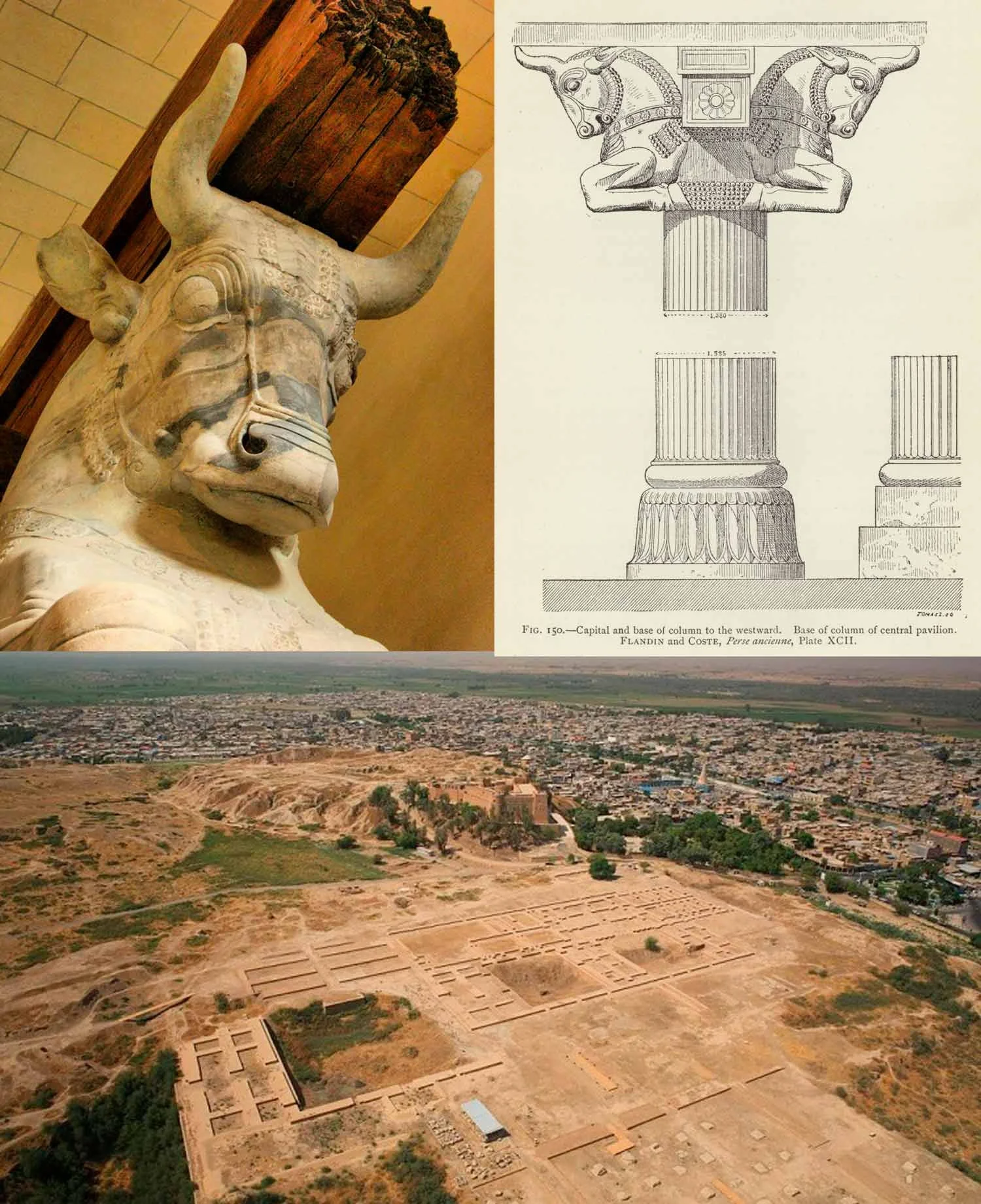
Hand drawn Bull Capital from the Apadana
*
Hand drawn Bull Capital from the Apadana *

Historical context
Susa, one of the oldest cities in the world, is located in southwestern Iran, in the Khuzestan province. Founded around 4000 BCE, it sits at the crossroads of the Tigris Valley and the Iranian plateau, making it a strategic hub between Mesopotamia and Iranian cultures.
As the capital of Elam, Susa played a central role in the development of early states and urbanization. Over time, it became a major political and cultural center, reflecting the combined influences of Mesopotamian and Iranian civilizations.
Under the Persian Achaemenid Empire, Susa served as a royal residence and an administrative capital. Darius I constructed a monumental palace in Susa, showcasing the grandeur and sophistication of Achaemenid architecture. Archaeological excavations have uncovered significant remains, demonstrating the city's historical and cultural importance through the ages.
Today, the ruins of Susa provide a valuable glimpse into the ancient history of Iran and the evolution of the civilizations that thrived in this region. The archaeological site, including structures such as the Acropolis, the Royal City, and the Apadana, remains an invaluable resource for historians and enthusiasts.
Persepolis, reconstruction of the Apadana. Charles Chipiez. Public domain. 1890

Darius I’s Palace at Susa – A Masterpiece of Achaemenid Architecture and Culture
Illustration inspired by the frieze of archers present on the walls of the Palace of Darius in Susa. IA
Darius I, known as the "King of Kings," reigned from 522 to 486 BCE over a Persian empire stretching from the Nile to the Indus. His palace at Susa, discovered in the mid-19th century, is renowned for its glazed brick friezes, including those of archers and lions, some of which are displayed at the Louvre.
Excavations led by archaeologist Jean Perrot from 1968 to 1979 provided greater insight into the architecture and function of this royal residence, strategically located between Persepolis and Babylon. These findings highlighted Susa’s significance as an administrative and cultural center of the Achaemenid Empire.

Map of Archaeological Sites in Iran with Highlights of Susa – Ancient Persian Legacy. © François Desset / Bibliothèque nationale de France
Geographic Origins of the Artworks
1. Susa
Location: Located in southwestern Iran, in the Khuzestan plain, near the borders of modern-day Iraq.
Origin: One of the oldest cities in the world, it was the capital of Elam before being incorporated into the Achaemenid Empire.
Function:
Administrative center and political capital of the Achaemenid Empire under Darius I.
Its palace, adorned with glazed brick friezes, served as a royal residence and administrative headquarters.
Architectural Features:
Use of glazed bricks to decorate walls.
Featured famous friezes, such as those of the archers and lions, symbols of power and protection.
Climate: Warmer and more humid, suitable for year-round administrative activities.

Challenges to Iran’s Cultural Heritage
Iran's rich cultural heritage spans nearly 10,000 years, with thousands of archaeological sites, historic monuments, and artifacts. However, its preservation faces numerous threats, including climatic factors, pollution, illicit excavations, rapid urbanization, and insufficient resources. Natural disasters like earthquakes and floods have also caused significant damage over time.
Human conflicts, notably the Iran-Iraq War (1980-1988), inflicted devastating losses on the country’s cultural heritage. Cities such as Susa, Isfahan, and Kermanshah suffered damage to invaluable historic structures and archaeological sites. More recent conflicts, such as the Gulf War, further exacerbated the deterioration through air pollution and environmental damage.
To combat these challenges, Iran has initiated various conservation efforts, including documenting heritage sites, improving museum storage, and collaborating with international organizations like ICCROM and ICOMOS. These initiatives aim to safeguard Iran’s legacy for future generations, though the task remains colossal.
These images highlight the grandeur of the Apadana Palace at Susa, a masterpiece of Achaemenid architecture under Darius I. The majestic bull capital (top left) symbolizes strength and stability, while the detailed architectural drawing (top right) reveals the intricate design of the columns. The aerial view (bottom) showcases the expansive archaeological site, offering a glimpse into the palace's scale and its central role in ancient Persia. This iconic site reflects the artistic and political sophistication of the Achaemenid Empire.



